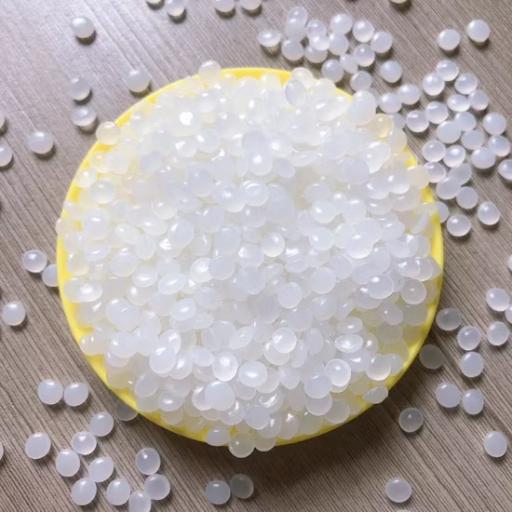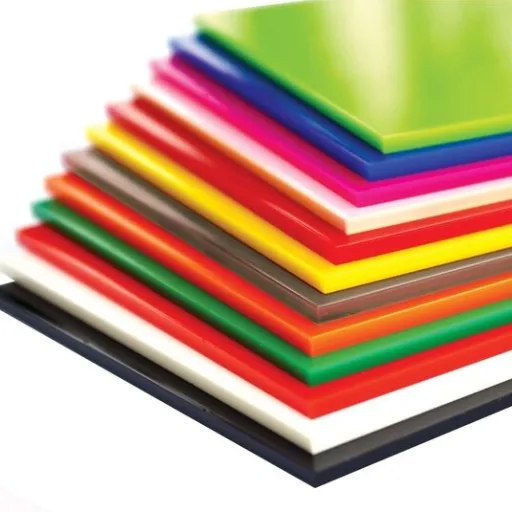Plastics are essential components in today’s manufacturing industry. However, the correct plastic type for a particular application is not apparent. The most commonly used plastics include low-density polyethylene (LDPE) and thermoplastic elastomers (TPE), which have distinct characteristics and practical applications. This article explains the differences between LDPE and TPE so that engineers, designers, and corporate executives can easily understand and confidently use the most appropriate material for their intended projects. We will discuss several important characteristics, such as mechanical flexibility, chemical resistance, and the environmental impact of the plastics, and compare them in depth to help streamline the choice of materials.
What is LDPE, and how is it used?

Low-density polyethylene (LDPE) is a thermoplastic polymer made from ethylene. One of its defining qualities is flexibility, which comes with low weight and high moisture resistance. LDPE is popular with plastic films, bags, protective containers, and packaging materials. Widely used in the manufacturing of squeeze bottles, LDPE is popular due to its impact resistance and ease of processing. Moreover, LDPE provides ease of recycling, which makes the material even more attractive and sustainable for industries.
Typical Applications and Uses of LDPE
LDPE or Low-Density Polyethylene is an essential material in many sectors because of its usefulness. Its primary use is in the plastic industry, which manufactures plastic bags, shrink wraps, and stretch films due to its adaptability and semi-transparency. Also, LDPE is equally important in agriculture as it is used in manufacturing greenhouse films, mulch films, and drip irrigation systems because of its strength, moisture repellent properties, and ability to resist chemicals.
Another vital use of LDPE is in making the plastic films that coat paperboard and cardboard containers like milk and beverage cups, providing a sound barrier to moisture. Another critical application is electrical insulation. LDPE is used for jacketing cables and other electrical appliances because of its high dielectric strength and thermal stability. The material’s lenses shock them up, and its low modulus makes it possible to use it to produce household items like squeeze bottles, caps, and toys, which are also easily flexible.
New technology changes have even tailored LDPE for use in the medical field, such as in pharmaceutical packaging and dispensing systems. Due to its fundamental characteristics, LDPE is poised to remain an essential resource in all sectors while helping the environment through new recycling policies.
How is TPE Different from LDPE?
Both thermoplastic elastomers (TPE) and low-density polyethylene (LDPE) are polymers. However, they greatly differ in their structure, properties, and applications. LDPE is characterized by a branched, flexible, impact-resistant, and chemically stable structure. These properties make LDPE useful in packaging films, containers, and plastic bags. TPE, conversely, is a copolymer or physical blend of polymers with an elastic nature and a thermoplastic property. This composition greatly aids in TPE, being reformed and soft-stretched into its original shape without damage.
Thermoplastic elastomers are widely used for soft-touch grips, seals, and tubing, which gives them applications in automotive, medical, and consumer products. While TPE has good rubber-like characteristics and is more elastic than LDPE, the branched structure of LDPE polymers provides valuable traits that benefit other application areas.
Due to thermoplastic behavior, TPE remains flexible and can be molded, extruded, and reprocessed several times with minimal loss in mechanical properties. At the same time, LDPE is also recyclable but less elastic and does not provide the same mechanical recovery as TPE. Furthermore, TPE exhibits better overall efficiency within a broader range of operating temperatures and is frequently used in applications where flexibility and sturdiness are needed under dynamic stress. At the same time, LDPE is preferred for its strength and low cost in static applications. These differences make TPE and LDPE valuable for different industrial and consumer uses.
Applications in Packaging Materials and Food Containers
Thermoplastic elastomers (TPE) are widely used in packaging where the materials must be flexible, heat resistant, and resilient. Their ability to withstand physical and repetitive use stresses structures like seals, gaskets, and protective layers in flexible packaging. The material is favored in the packaging industry because it is compatible with recycling systems, supporting the recently proposed sustainability standards.
Low-density polyethylene (LDPE) is widely used in food containers and packaging because it is durable, moisture resistant, and inexpensive. Because of its low permeability to moisture and chemicals, it is used to manufacture cling films, zip-lock bags, and squeeze bottles. For food-related applications, LDPE complies with necessary industry regulations and continues to dominate applications sensitive to contamination. Also, expansions in the engineering sectors of polymers have recently made it easier to recycle LDPE, increasing its usefulness in shifting markets looking for eco-friendly alternatives.
What is TPE, and what is its role in the plastic industry?

Thermoplastic elastomers (TPE) are two-in-one materials that possess the flexibility of rubber and the ease of processing associated with plastics. TPEs are widely used in the plastic industry because of their softness, toughness, moldability, and ease of extrudability. They function in high-performance and multifunctional requirements for automotive parts, medical equipment, consumer products, etc. Their use in the industry is appealing because TPEs are reusable and recyclable, helping to lower environmental impacts.
Understanding Thermoplastic Elastomers
Advanced polymeric materials such as thermoplastic elastomers (TPE) have rubber-like elasticity, soft structural components, and thermoplastic characteristics. Their distinctive structure usually comprises soft, elastomeric segments and complex, thermoplastic domains with a microphase-separated morphology. TPE’s ability to withstand various conditions, temperatures, and chemical substances makes it a reliable thermoplastic with excellent elongation and toughness.
With TPE, hardness can be adjusted depending on the polymer composition, which means different Shore durometer scales of TPE can be used for various applications. Their long-lasting performance under physical stress makes them useful for tough geographical areas. TPE’s tensile strength, elongation at break, compression set, and wear resistance are vital to determining TPE compatibility for an application.
Additives, fillers, and stabilizers can further enhance the functionality of TPE materials. For instance, coupling agents improve the bonding between soft and hard phases, while UV stabilizers elongate durability in sun-exposed applications. Such addable features enable these elastomers to address various industrial needs without compromising efficiency and cost-effectiveness during manufacturing.
Unique Benefits and Elasticity of Rubber
Combining rubber elasticity with thermoplastic processes makes TPEs irreplaceable in different industries. These materials are comparable to traditional vulcanized rubber in elongation and recovery but are not bound by the need for curing. In dynamic environments, TPEs are stressed significantly but can return to their original shape once the stress is released.
Improvements made to the composition of TPEs have heightened their ability to withstand extremes in temperature and chemical exposure and their flexibility at low temperatures. Their ease of molding and low compression set make them ideal for manufacturing soft-touch grips, gaskets, and seals. In addition to all these features, modern TPEs are engineered to meet environmental concerns, with many having a recyclable grade. This enhances sustainability and underscores the growing use of TPEs instead of traditional rubbers in automobiles, healthcare, and consumer goods industries.
Specific Applications in Automotive and Medical Tubing
Thermoplastic elastomers (TPE) are vital from the automobile industry to medical tubing due to their flexibility, strength, and chemical resistance. In the automobile industry, TPEs are also extensively utilized for weather stripping, protective covers, wire harnesses, and flexible bellows. They perform reliably in vehicles exposed to extreme temperatures and degrade from oils, fuels, and environmental exposure. In addition, changes made to TPE formulations allow the use of lightweight materials, which aids in lowering the vehicle weight and, hence, improving its fuel economy.
Precision and safety make it essential for strict regulations to be met in the medical industry, especially in TPE tubing applications. Their critical biocompatibility makes TPEs suitable for peristaltic pumps, catheters, and fluid transfer systems. Medical grade TPE tubing also withstands sterilization techniques like autoclaving and gamma radiation, making them performant throughout their entire lifecycle. New technologies have also advanced functions, adding kink resistance, softer finishes, and antimicrobial surfaces crucial for hygiene-sensitive environments. All these changes and enhancements describe the importance and versatility of TPEs in specialized applications spanning multiple industries.
Comparing Types: LDPE vs. TPE

LDPE (Low-Density Polyethylene) and TPE (Thermoplastic Elastomers) have unique properties that are suited for particular purposes. LDPE’s flexibility and moisture resistance benefit packaging, insulation, and disposable products. Despite these advantages, LDPE’s low elasticity and tear strength inhibit its application in static21 or loaded environments.
In contrast, TPE has the advantages of elastomers and plastics, providing excellent elasticity, strength, and soft and rigid tailored attributes. Due to these characteristics, TPE is essential for applications needing repeated flexing, like medical tubing, seals, and other consumer goods. Unlike LDPE, TPE’s compatibility with numerous additives and finishes makes it greatly useful in specialized industrial applications.
The Difference Between LDPE and TPE
Considering LDPE (Low-Density Polyethylene) and TPE (Thermoplastic Elastomer), application performance and functionality are evaluation criteria for their properties and Chemistry. Due to LDPE being a softer and more “stretchy” polymer, it possesses excellent resistance to low-temperature impacts, acids, and bases. This characteristic makes it highly favorable for packaging films, grocery bags, and squeeze bottles. On the other hand, its elasticity and lower tensile strength prove too much in dynamic or high-stress use cases.
On the other hand, TPE is distinctive, with a balance of rubber-like elasticity and plasticity leaning to either side interchangeably due to the composition of thermoplastic and elastomeric parts providing the material. Thanks to its hybrid nature, the TPE can withstand flexing, retain shape after deformation, and allow incorporation of sophisticated additives for particular industry needs. For instance, TPEs can also be customized to improve thermal stability in automotive parts or to comply with biocompatibility requirements in medical devices.
From an industrial angle, LDPE is abundantly produced where volume and cost are conducive due to ease of extrusion and molding. On the other hand, TPE is more sustainable due to better reuse capabilities through melt processing and reshaping. These differences highlight how the choice of LDPE or TPE blends mostly depends on the intended usage’s imposed technological, environmental, and functional considerations.
Impact of Chain Branching on Properties
In polymers, chain branching directly impacts a material’s physical, mechanical, and thermal characteristics as it modifies the molecular framework together with its intermolecular associations. In general, a high amount of chain branching reduces the density of the polymer within a specific range, as the branched chains hinder close packing of the molecular structure. For instance, in polyethylene, low-density polyethylene (LDPE), having more extensive branching than high-density polyethylene (HDPE), possesses lower tensile strength but greater flexibility.
Branching also tends to change the polymer’s crystallinity. Increasing chain branching lowers the crystallinity and melting point by obstructing the orderly arrangement of polymer chains. Highly branched polymers are particularly desirable because these features allow for lower-temperature processing. Moreover, increased chain branching tends to improve the material’s resistance to stress while reducing rigidity and making it more ductile.
From a thermal point of view, chain branching affects heat conductivity and heat resistance. Increased branching in a polymer often results in lower thermal degradation temperatures because of reduced intermolecular forces. A more comprehensive understanding of the relationship between branching and material properties helps developers customize polymers for particular uses, improving flexibility, durability, and thermal stability.
Choosing the Right Plastic Type for Your Needs
Choosing a plastic material requires assessing many critical factors such as mechanical characteristics, environmental exposure, and specific application needs. A good example is polypropylene (PP) plastic, which is widely used in producing automotive parts and reusable containers due to its high chemical resistance and flexibility. On the other hand, a polycarbonate (PC) plastic possesses high impact resistance and good optical clarity, making it suitable for eyewear lenses and other protective equipment.
Some of the most powerful engineering plastics are used in extreme conditions. An example is polyethylene ether ketone, which is widely used in the aerospace and medical sectors for its exceptional mechanical strength and temperature longevity. PEEK is also eco-friendly; with sustainable manufacturing on the rise, polylactic acid has been gaining attention. PLA is a biodegradable polymer ideal for packaging and single-use items.
Understanding environmental conditions is just as important when it comes to functionality. Depending on exposure, things like UV light, moisture, and chemical interactions can deteriorate plastic over time. Having the right plastic under these conditions will increase functionality and reduce costs during a product’s lifetime.
The Sustainability of Plastic Materials

The durability and longevity of plastic materials depend on production processes, environmental footprint, and disposal methods. They are categorized into bio-based plastics like PLA, which mitigate the use of fossil fuels and have variable biodegradability based on the conditions of disposal, and conventional plastics like PET and HDPE, whose recycling lowers environmental impact but need robust collection and processing systems. Sustainable disposal options require a detailed assessment of the material’s entire lifecycle, such as sourcing, energy consumption, and waste management after use.
Recycling and Environmental Impact of LDPE and TPE
The recycling of LDPE (Low-Density Polyethylene) and TPE (Thermoplastic Elastomers) faces specific challenges tied to each material’s characteristics. LDPE is technically recyclable, but its lower rigidity makes sorting and processing more challenging. Streamlined approaches to LDPE waste require proper infrastructure coupled with advanced recycling technologies. TPE, however, is a blend of rubber and plastic, making it partially recyclable. Its diversity of formulations renders the recycling process complicated. To these materials, enduring sustainable end-of-life management mandates advanced closed-loop recycling systems and the manufacture of easier-to-recycle alternatives.
Innovations in Sustainable Plastic Alternatives
In resolving plastic’s “end-of-life” issues, modern approaches strive to develop either compostable or biodegradable plastics. Examples of such emerging polymers are polylactic acid (PLA) and polyhydroxyalkanoates (PHAs), which are gaining attention for their natural derivation and ability to decompose under composting conditions. PHAs are compostable polymers formed by microbial fermentation of sugars or lipids. They can be designed with desired properties, having thermal stability and high tensile strength. PLA has similar properties and is synthesized from renewable feedstock such as corn starch and sugarcane. It is used widely in packaging, agriculture, and 3D printing.
On another note, an adaptation of chemical recycling methods, which convert waste plastics into monomers for repolymerization to reduce virgin material usage, is gaining attention. Technologies like pyrolysis and enzymatic degradation are up-and-coming due to their closed-loop recycling nature, which entails minimal quality degradation. Alongside stronger regulatory measures, businesses and policies aimed to cut back on single-use plastics; these innovations markedly advance the development of sustainable alternatives, fostering a circular plastic production and disposal model.
Future Trends in Plastic in the World
One of the critical future trends I predict is the world of advanced recycling technologies in the plastics sector, which goes far beyond mechanical recycling to bio and chemical recycling. These technologies will enhance resource extraction and material recovery. Furthermore, I predict a shift towards bio-based plastics made from renewables that can replace fossil fuel-based materials. There is also likely to be greater international cooperation on policies that advance a circular economy with stricter single-use plastic controls and are designed for sustainability mandates.
Reference Sources
-
Hanpak: What’s the difference between LDPE, HDPE, TPE, CPE Gloves
This source provides a detailed comparison of LDPE and TPE, focusing on their molecular structures, properties, and applications. -
DPL Group: Maximising Potential – How TPE Enhances HDPE and LDPE Performance
This article discusses how TPE can enhance the performance of LDPE, including improvements in flexibility, durability, and impact resistance. -
Safecap: Materials Overview
This page concisely describes LDPE and TPE, highlighting their temperature resistance, flexibility, and suitability for various applications. - Top TPE Plastic Pellets Suppliers in China
Frequently Asked Questions
Q: What is the main difference between LDPE and TPE?
A: LDPE (low-density polyethylene) is a type of plastic known for its flexibility and low density, making it ideal for plastic bags and packaging. TPE (thermoplastic elastomers) are polymers that combine the properties of rubber with the recyclability of plastics. They are often used in automotive and consumer goods for their elasticity and durability.
Q: What are the common uses of LDPE plastic?
A: Due to its flexibility and resistance to impact, LDPE plastic is commonly used in applications such as shopping bags, plastic wraps, and containers. It is also used in wire and cable insulation and other packaging materials.
Q: How does TPE compare to PVC regarding flexibility and durability?
A: TPE offers greater flexibility and elasticity compared to PVC (polyvinyl chloride), making it ideal for applications requiring rubber-like properties. TPE is also more durable and can withstand a wider range of temperatures, which is beneficial in automotive and consumer goods.
Q: Can LDPE be recycled, and how does it compare to polypropylene in recycling?
A: LDPE can be recycled, though it is less commonly recycled than polypropylene (PP). LDPE is often used for products like plastic bags, which may not be as easily recyclable as PP products. However, recycling programs are available for LDPE in many areas.
Q: What are the key characteristics of polyethylene terephthalate compared to LDPE?
A: Polyethylene terephthalate (PET) is a type of plastic known for its strength and transparency. It is commonly used in beverage bottles and food packaging. Unlike LDPE, which is flexible and less dense, PET is more rigid and offers excellent chemical resistance and barrier properties.
Q: How does the molecular structure of LDPE affect its properties?
A: LDPE’s molecular structure includes excessive branching, which prevents the polymer chains from packing closely together. This results in a less dense, more flexible material and a lower melting point than other polyethylene types, like HDPE.
Q: What makes TPE a popular choice in the automotive industry?
A: TPE is a popular choice in the automotive industry due to its flexibility, durability, and ease of processing. Its rubber-like properties make it suitable for seals, gaskets, and interior components that require both elasticity and resistance to wear.



